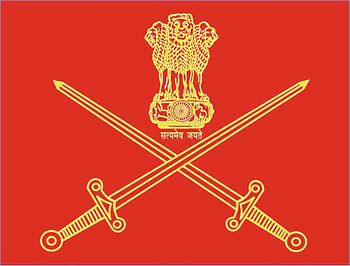https://m.youtube.com/watch?v=AP1QriDRPWc
Sunday, 31 January 2016
Cool night temperatures to continue in the UAE big news
Cool night temperatures to continue in the UAE
Overnight temperatures lowest in mountainous areas, says national weather bureau
By Derek Baldwin, Chief Reporter
January 31, 2016
January 31, 2016
Dubai: Cooler temperatures overnight will continue with the mercury dipping, said the national weather bureau on Sunday.
Temperatures were predicted to drop to 2C in mountainous areas of UAE and 7C in internal areas of the country, according to the weather forecast by the National Centre of Meteorology and Seismology in Abu Dhabi.
Cloudty conditions will prevail throughout the night and over the next couple of days with windy conditions blowing dust and creating moderate to rough conditions in the Gulf and Oman Sea.
For early Monday morning, centre forecasters “relative humidity will increase during night and early morning over some internal areas with a chance of mist/fog formation over some of these areas. Sea will be rough over the Arabian Gulf, and moderate over Oman Sea.”
As for Tuesday and beyond, the weather centre predicted “fair to partly cloudy weather. Moderate winds freshening at times causing blowing dust over the exposed areas. Sea will be moderate becomes rough at times over Arabian Gulf, and moderate over Oman Sea. The relative humidity will increase by night and early morning, fog or mist may form over some inland parts.”
2016 ICC World Twenty20
2016 ICC World Twenty20
For the women's tournament taking place at the same time, see 2016 ICC Women's World Twenty20.
 | |
| Dates | 8 March – 3 April 2016 |
|---|---|
| Administrator(s) | International Cricket Council |
| Cricket format | Twenty20 International |
| Tournament format(s) |
Group stage and
knockout |
| Host(s) | |
| Participants | 16 |
| Matches played | 35 |
← 2014
2020 →
| |
The 2016 ICC World Twenty20 will be the sixth ICC World Twenty20 tournament and is scheduled to be held in India from 8 March to 3 April.[1][2][3][4] The International Cricket Council, after its first meeting in Dubai on 28 January 2015, awarded India the rights to host the World Twenty20 championship in 2016. Sri Lanka are the defending champions.
Teams
Squads
Venues
Qualified teams
Trophy tour
Schedule
References
External links
Saturday, 30 January 2016
Indian Army (jai hind )
Indian Army
This article is about the Indian Army since 1947. For the 1858–1947 Indian Army, seeBritish Indian Army. For the earlier period, see Military history of India.
| Indian Army | |
|---|---|
| Bhāratīya Thalsēnā भारतीय थलसेना | |

Crest of the Indian Army
| |
| Founded | 1 April 1895 |
| Country | |
| Type | Army |
| Size | 1,129,900 active personnel 960,000 reserve personnel 104 aircraft[1] |
| Part of | Indian Armed Forces |
| Headquarters | New Delhi |
| Motto | "Service Before Self" |
| Colours | Gold, red and black |
| Website | indianarmy.nic.in |
| Commanders | |
| Chief of the Army Staff (COAS) | General Dalbir Singh Suhag[2] |
| Vice Chief of the Army Staff | Lt Gen MMS Rai[3] |
| Notable commanders | Field Marshal K M Cariappa Field Marshal Sam Manekshaw Lt. Gen. J.S. Aurora |
| Insignia | |
| Flag of the Indian Army | |
| Aircraft flown | |
| Helicopter | HAL Rudra |
| Transport | HAL Dhruv, HAL Chetak, HAL Cheetah and Cheetal |
The Indian Army (IA, Hindi: भारतीय थलसेना,Bhāratīya Thalsēnā) is the land-based branchand the largest component of the Indian Armed Forces. The President of India serves as Commander-in-Chief of the army, and it is commanded by the Chief of Army Staff(COAS), who is a four-star General. Two officers have been conferred the rank of Field marshal, a Five-star rank, which is a ceremonial position of great honour. The Indian Army originated from the armies of theEast India Company, which eventually became the British Indian Army and finally the national army after independence. The units and regiments of the Indian Army have diverse histories and have participated in a number of battles and campaigns across the world, earning a large number of battle and theatre honours before and after Independence.[4]
The primary mission of the Indian Army is to ensure national security and unity, defendingthe nation from external aggression and threats, and maintaining peace and security within its borders. It conducts humanitarian rescue operations during natural calamities and other disturbances, like Operation Surya Hope, and can also be requisitioned by the government to cope with internal threats. It is a major component of national power alongside the Indian Navy and the Indian Air Force.[5] The army has been involved in four wars with neighbouring Pakistan and one with China. Other major operations undertaken by the army include Operation Vijay, Operation Meghdoot and Operation Cactus. Apart from conflicts, the army has conducted large peace time exercises likeOperation Brasstacks and Exercise Shoorveer, and it has also been an active participant in numerous United Nations peacekeeping missions including the ones in Cyprus, Lebanon, Congo, Angola, Cambodia, Vietnam, Namibia, El Salvador, Liberia, Mozambique and Somalia.
The Indian Army has a regimental system, but is operationally and geographically divided into seven commands, with the basic field formation being a division. It is an all-volunteer force and comprises more than 80% of the country's active defence personnel. It is the 2nd largest standing armyin the world, with 1,129,900 active troops and 960,000 reserve troops.[6] The army has embarked on an infantry modernisation programme known as Futuristic Infantry Soldier As a System (F-INSAS), and is also upgrading and acquiring new assets for its armoured, artillery and aviation branches.[7][8][9]
History
Conflicts and operations
Major exercises
Today
Formation and structure
Future developments
See also
References
External links
Subscribe to:
Comments (Atom)
